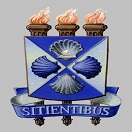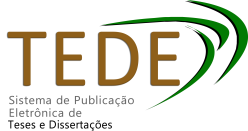| Compartilhamento |


|
Use este identificador para citar ou linkar para este item:
http://tede2.uefs.br:8080/handle/tede/1838Registro completo de metadados
| Campo DC | Valor | Idioma |
|---|---|---|
| dc.creator | Silva, Priscila da | - |
| dc.creator.Lattes | http://lattes.cnpq.br/8679607002712384 | por |
| dc.contributor.advisor1 | Santana, Marise de | - |
| dc.contributor.advisor1Lattes | http://lattes.cnpq.br/5657117327406792 | por |
| dc.contributor.advisor-co1 | Ferreira, Edson Dias | - |
| dc.contributor.advisor-co1Lattes | http://lattes.cnpq.br/1254681923469103 | por |
| dc.date.accessioned | 2025-06-12T17:27:55Z | - |
| dc.date.issued | 2024-09-20 | - |
| dc.identifier.citation | SILVA, Priscila da. Os fios e nós do macramê de Lícia Maria Jorge: uma trama milenar desenhada por formas geométricas, 2024, 117 f., Dissertação (mestrado) - Programa de Pós-Graduação em Desenho Cultura e Interatividade, Universidade Estadual de Feira de Santana, Feira de Santana. | por |
| dc.identifier.uri | http://tede2.uefs.br:8080/handle/tede/1838 | - |
| dc.description.resumo | Este estudo tem como propósito buscar formas geométricas presentes nas peças do macramê dentro da cultura do artesanato em Feira de Santana – BA, e dá artesã Lícia Maria Jorge, percorrendo um caminho com o apoio teórico-conceitual de autores que trazem a história do macramê relacionada com as formas geométricas, bem como a importância do artesanato brasileiro, do trabalho manual feito pelo artesão, os saberes ancestrais que carregam e sua resistência em manter o legado familiar, com as narrativas no método história de vida, com auxílio da técnica de entrevista semiestruturada. Os teóricos principais são Campos e Garcia (2012), Wong (1998), Sodré (1983), Morin (1973), Minayo (1994), Neto (2002), Triviños (1987), Bauer e Gaskel (2022), Gomes (1996). Analisando assim o processo criativo e a preparação dos produtos feitos com o macramê, para se fazer saber como as formas geométricas aparecem nas peças desenvolvidas pela artesã Lícia Maria Jorge? Pergunta norteadora da pesquisa. O estudo foi realizado utilizando como recurso metodológico uma pesquisa de campo, com uma abordagem do tipo qualitativa descritiva, das descobertas acerca dos fios e nós do macramê, considerando o conhecimento familiar, técnico, contemporaneidade e as obras da artesã Lícia Maria Jorge, analisada em estudo de campo, na busca de entender através de percepções do macramê, considerando sua evolução e análise de formas geométricas das peças. Assim o caráter desta pesquisa foi relacionado a análise das considerações da artesã, acerca de seu trabalho e influências da história de vida, dando sustento ao propósito que se enseja trilhar. As análises do estudo indicaram que o artesanato em Macramê não segue um processo homogêneo, o que lhe confere complexidade e diversidade. Ele está intimamente ligado à sustentabilidade na criação das peças, além de envolver a arte manual, a criatividade, a memória, os significados, e a história. O Macramê utiliza técnicas transmitidas ao longo das gerações, sendo resultado de um processo criativo que combina o antigo com o contemporâneo. As peças, com belos designs e formas geométricas, não apenas ganham valor estético e funcional, mas também desempenham um papel sustentável, refletindo os aspectos culturais de um povo. esse contexto, a prática artesanal leva em consideração o estilo de vida do artesão, sua visão de mundo e as necessidades de sua clientela. | por |
| dc.description.abstract | This study aims to search for geometric shapes present in macramé pieces within the craft culture in Feira de Santana - BA, and by artisan Lícia Maria Jorge, following a path with the theoretical-conceptual support of authors who bring the history of macramé related to geometric shapes, as well as the importance of Brazilian crafts, the manual work done by the artisan, the ancestral knowledge they carry and their resistance to maintain the family legacy, with narratives in the life story method, with the help of the semi-structured interview technique. The main theorists are Campos and Garcia (2012), Wong (1998), Sodré (1983), Morin (1973), Minayo (1994), Neto (2002), Triviños (1987), Bauer and Gaskel (2022), Gomes (1996). Analyzing the creative process and the preparation of products made with macramé, to find out how geometric shapes appear in the pieces developed by artisan Lícia Maria Jorge? This is the guiding question of the research. The study was conducted using field research as a methodological resource, with a descriptive qualitative approach, of the discoveries about macramé threads and knots, considering the family and technical knowledge, contemporaneity and the works of artisan Lícia Maria Jorge, analyzed in a field study, in the search for understanding through perceptions of macramé, considering its evolution and analysis of the geometric shapes of the pieces. Thus, the nature of this research was related to the analysis of the artisan's considerations, about her work and influences from her life history, supporting the purpose that is intended to be followed. The analyses of the study indicated that Macramé craftsmanship does not follow a homogeneous process, which gives it complexity and diversity. It is closely linked to sustainability in the creation of the pieces, in addition to involving manual art, creativity, memory, meanings, and history. Macramé uses techniques passed down through generations, resulting from a creative process that combines the ancient with the contemporary. The pieces, with beautiful designs and geometric shapes, not only gain aesthetic and functional value, but also play a sustainable role, reflecting the cultural aspects of a people. In this context, the artisanal practice takes into account the artisan's lifestyle, their worldview and the needs of their clientele. | eng |
| dc.description.provenance | Submitted by Daniela Costa (dmscosta@uefs.br) on 2025-06-12T17:27:55Z No. of bitstreams: 1 PRISCILA DA SILVA - DISSERTACAO.pdf: 3824731 bytes, checksum: fb1f6ce978e10f0bd4161f27002bb5c2 (MD5) | eng |
| dc.description.provenance | Made available in DSpace on 2025-06-12T17:27:55Z (GMT). No. of bitstreams: 1 PRISCILA DA SILVA - DISSERTACAO.pdf: 3824731 bytes, checksum: fb1f6ce978e10f0bd4161f27002bb5c2 (MD5) Previous issue date: 2024-09-20 | eng |
| dc.description.sponsorship | Fundação de Amparo à Pesquisa do Estado da Bahia - FAPEB | por |
| dc.format | application/pdf | * |
| dc.thumbnail.url | http://tede2.uefs.br:8080/retrieve/7688/PRISCILA%20DA%20SILVA%20-%20DISSERTACAO.pdf.jpg | * |
| dc.language | por | por |
| dc.publisher | Universidade Estadual de Feira de Santana | por |
| dc.publisher.department | DEPARTAMENTO DE LETRAS E ARTES | por |
| dc.publisher.country | Brasil | por |
| dc.publisher.initials | UEFS | por |
| dc.publisher.program | Mestrado Acadêmico em Desenho Cultura e Interatividade | por |
| dc.rights | Acesso Aberto | por |
| dc.subject | Macramê | por |
| dc.subject | Forma Geométrica | por |
| dc.subject | Artesanato | por |
| dc.subject | Lícia Maria Jorge | por |
| dc.subject | Macramé | eng |
| dc.subject | Geometric Shape | eng |
| dc.subject | Crafts | eng |
| dc.subject | Lícia Maria Jorge | eng |
| dc.subject.cnpq | ARTES PLASTICAS::TECELAGEM | por |
| dc.title | Os fios e nós do macramê de Lícia Maria Jorge: uma trama milenar desenhada por formas geométricas | por |
| dc.type | Dissertação | por |
| Aparece nas coleções: | Coleção UEFS | |
Arquivos associados a este item:
| Arquivo | Descrição | Tamanho | Formato | |
|---|---|---|---|---|
| PRISCILA DA SILVA - DISSERTACAO.pdf | Silva, Priscila da - Dissertação | 3,74 MB | Adobe PDF |  Baixar/Abrir Pré-Visualizar |
Os itens no repositório estão protegidos por copyright, com todos os direitos reservados, salvo quando é indicado o contrário.




